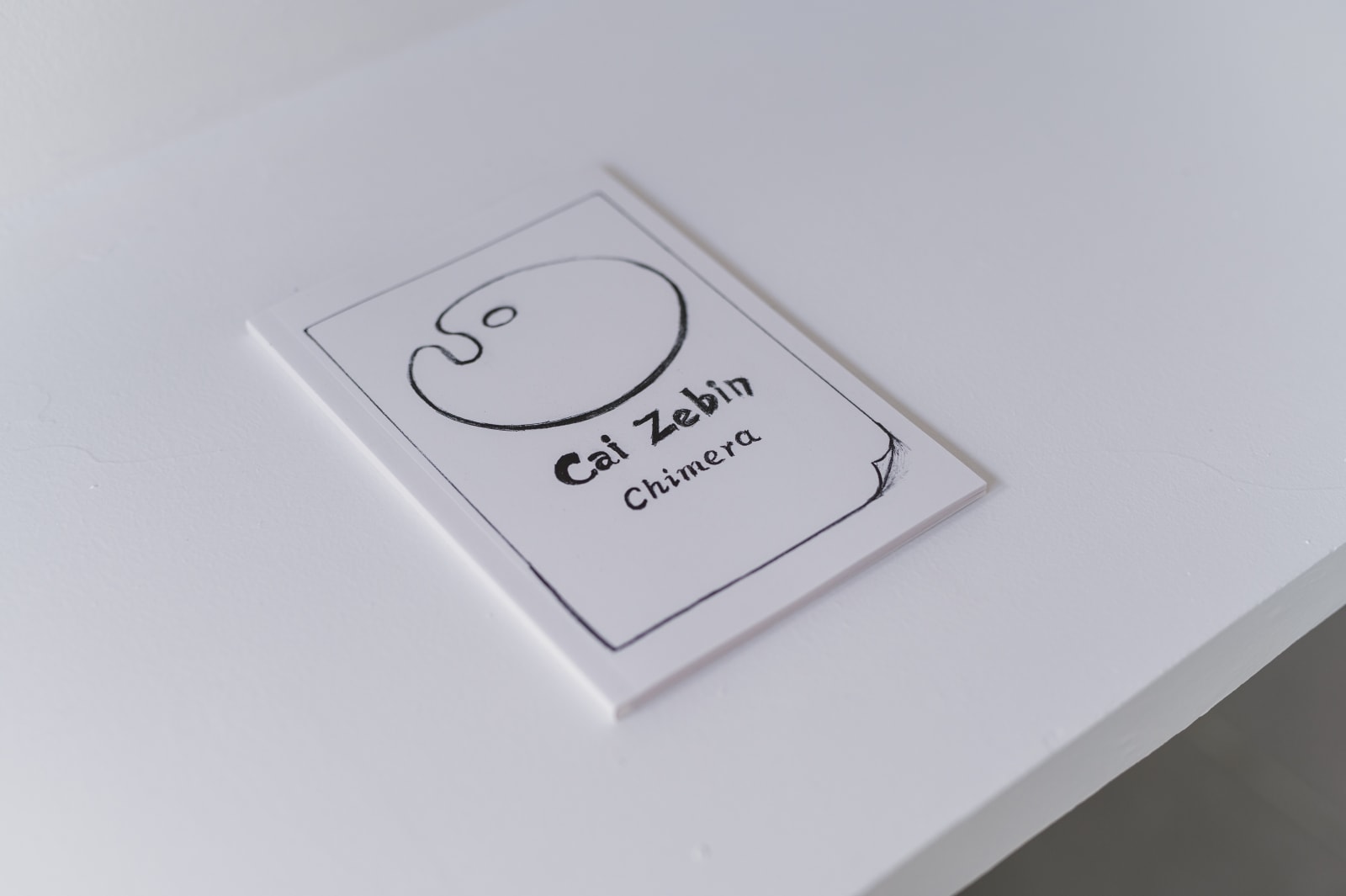We are pleased to announce artist Cai Zebin's solo exhibition From rue Perrel to Southern Gothic at TC101 SPACE of The Chinese University of Hong Kong, Shenzhen, curated by Fiona He. The exhibition opens on August 26th 2022, and will last until October 8th, 2022.
Taking a selfie with modern communication devices is likely the fastest way of producing a “self-portrait” in our era. By holding up a mobile phone, flipping the lens and adjusting it, one could capture the most satisfying image of oneself with a camera app. With the help of algorithms, countless filters and retouching, one gazes at this “selfie” obsessively, before delivering a projected image of the self. The Internet and social media platforms then allow one to share “who and where I am” with the world instantly, conveniently releasing a “self-representation” that most fittingly matches one’s self-conception. This process, of course, further blurs the boundary between reality and fiction.
The discussions around ways of seeing and the gaze have been ongoing threads in the fields of philosophy and social theory of the 20th century and continue to the present day. If the “selfie” – a new-century narcissistic act driven by consumerism and activism – is akin to the gaze of dialogue and action, then this exhibition, “From rue Perrel to Southern Gothic,” is an attempt to present a reflection in the context of painting practices - how Cai Zebin, as a painter, presents his self-inquiry and selfhood centered on “self-portraiture” through the iconic “color palette.”
As the mention of Baker Street conjures up images of Sherlock Holmes, Cai Zebin’s artistic journey begins on rue Perrel in this exhibition, a historically renowned art location that has brought Victor Brauner (1903-1966) and Henri Rousseau (1844-1910) in conversation, to whom the artist pays tribute. It also hints at a path Cai Zebin has chosen for his works from 2020 to the present. In his view, the “color palette” is a painter’s most crucial thinking tool in his work process. It was also through gazing at oneself in the mirror that the palette gradually refined as the “object of embodying emotions” into a symbolic representation of Cai’s image, now adopted into his compositional vocabulary.
Everyday scenes of the artist’s daily life, through his pareidolia imagination, vibrant colors, and sophisticated painting techniques, transform the canvas into a transitional interface, where icons from Cai Zebin’s past paintings of various phases are incorporated as “props” into his large-dimensional works on canvas. While the small-dimensional “self-portraits” are prismatic to conceive infinite possibilities of weaving together interpretations with scenes and details through “pictorial narratives.” The appropriation of American Gothic by American artist Grant Wood (1891-1942) brings the spectator to the focus of Cai Zebin’s recent work. This expansion process echoes how the artist evolved from his early focus on “how a work is produced” to the current phase of choreographing theatricality through his own “screenwriting, directing, and performance.” In the enduring genre of “self-portraits,” the perception and representation of the self are no longer just Charles Baudelaire’s understanding of being “either as history or as fiction,” but rather the integration of both.
The space in which this exhibition is presented embodies a real place in our daily life, where Cai Zebin intentionally places a mirror in the shape of a color palette, offering the spectator multiple experiences of looking at and being looked back. In the process of self-examination, self-discovery, and self-invention, the mirror functions as what Jacques Lacan defined, to combine the real, the symbolic, and the imaginary. In Cai Zebin’s case, the works on canvas become where these three aspects come together. As the gazes converge between the artworks and the spectators, the works of art become devices for the distillation, amplification, and transmission of meaning embedded in a new context of viewing.
Text by Fiona He
August 27, 2022









